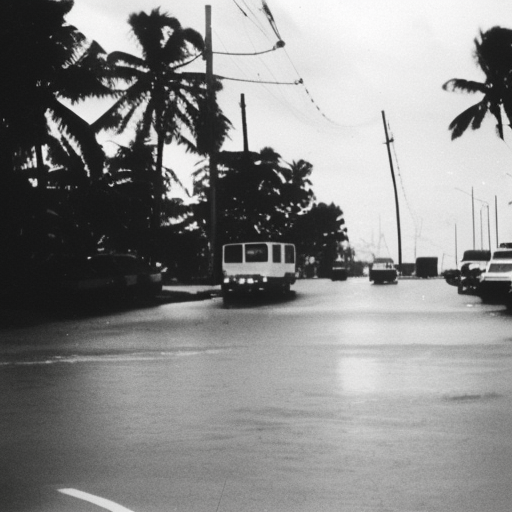Hurricane Maria: Hurricane Maria was a powerful Category 5 hurricane that struck the Caribbean in September 2017, causing widespread devastation and loss of life.
Background:
Hurricane Maria originated from a tropical wave that moved off the west coast of Africa in mid-September 2017. It quickly developed into a tropical storm and then rapidly intensified into a hurricane. As it moved across the Atlantic Ocean, it grew in strength and became a Category 5 hurricane with maximum sustained winds of 175 mph.
Impact on the Caribbean:
On September 18, 2017, Hurricane Maria made landfall on the island of Dominica, causing catastrophic damage. The storm then continued on a destructive path, hitting several other Caribbean islands, including Puerto Rico, the U.S. Virgin Islands, and the British Virgin Islands. The impact of the hurricane was devastating, with widespread destruction of infrastructure, homes, and vegetation.
In Puerto Rico, the storm caused extensive damage to the electrical grid, leaving the entire island without power. The lack of electricity hindered relief efforts and made it difficult for residents to access basic necessities such as clean water, food, and medical supplies. The island’s already struggling economy was further crippled by the storm, exacerbating the challenges faced by its residents.
Response and Recovery:
In the aftermath of Hurricane Maria, the international community rallied to provide aid and support to the affected countries. The United States deployed military personnel and resources to assist with relief efforts in Puerto Rico and the U.S. Virgin Islands. Humanitarian organizations and neighboring countries also provided assistance, sending supplies, medical teams, and volunteers to help with recovery efforts.
Rebuilding and recovery efforts in the affected countries were slow and challenging due to the scale of the destruction. In Puerto Rico, the restoration of power took months, and many areas continued to experience intermittent outages for an extended period. The government faced criticism for its handling of the crisis, with some accusing it of inadequate preparation and response.
Long-term Impact:
The long-term impact of Hurricane Maria on the Caribbean was significant. The storm caused an estimated $91.6 billion in damages, making it one of the costliest hurricanes in history. The loss of lives and destruction of infrastructure had a lasting impact on the affected countries’ economies and societies.
In Puerto Rico, the hurricane exacerbated existing challenges, including a debt crisis and population decline. Many residents were forced to leave the island in search of better opportunities elsewhere. The storm also highlighted the vulnerability of Caribbean nations to the impacts of climate change and the need for increased preparedness and resilience.
Lessons Learned:
Hurricane Maria served as a wake-up call for the Caribbean and the international community. It underscored the need for improved disaster preparedness, infrastructure resilience, and emergency response capabilities. The storm prompted discussions on climate change adaptation and mitigation strategies, as well as the importance of international cooperation in addressing the challenges posed by extreme weather events.
In the years following Hurricane Maria, efforts have been made to strengthen disaster management systems and enhance resilience in the Caribbean. These include investments in renewable energy, improved building codes, and the establishment of regional early warning systems.
Conclusion:
Hurricane Maria was a devastating natural disaster that caused widespread destruction and loss of life in the Caribbean. The storm highlighted the need for improved disaster preparedness and response capabilities, as well as increased resilience to the impacts of climate change. The long-term recovery and rebuilding efforts in the affected countries continue to this day, as they work to rebuild their communities and strengthen their resilience to future disasters.












